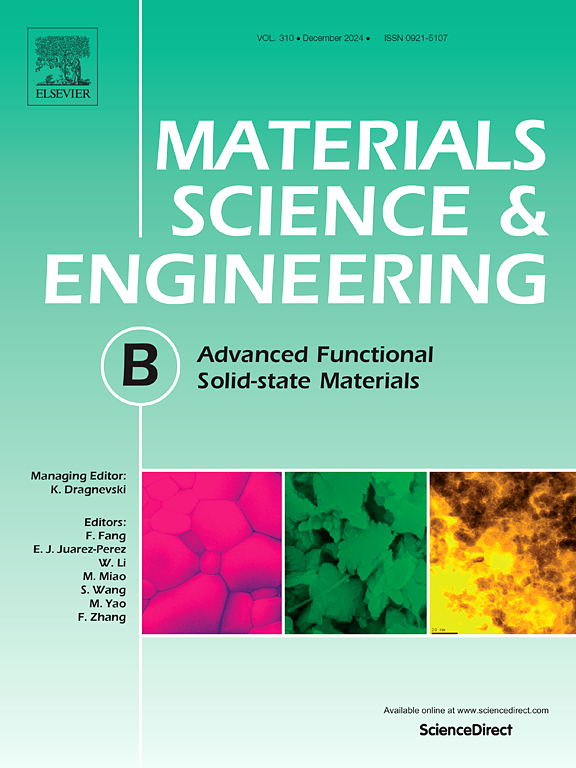Synthesis of ZnO2/CuO/ZnO nanocomposite using nanosecond pulsed laser for the reduction of 4-Nitrophenol using NaBH4
IF 4.6
3区 材料科学
Q2 MATERIALS SCIENCE, MULTIDISCIPLINARY
引用次数: 0
Abstract
Efficient catalysts that facilitate the conversion of 4-nitrophenol (4-NP) to 4-aminophenol (4-AP) are indispensable for an array of industrial processes. In this study, we synthesized an array of nanostructures including ZnO, CuO, ZnO2/CuO, and ZnO2/CuO/ZnO nanocomposites. These materials were then evaluated for their efficacy as catalysts in the reduction of 4-NP. To prepare ZnO2/CuO nanocomposites, we utilized a pulsed laser ablation technique involving ZnO and CuO in a 5 % hydrogen peroxide solution with a varying concentration of ZnO. The ZnO2/CuO/ZnO nanocomposites were subsequently fabricated through a post-annealing treatment of the ZnO2/CuO nanocomposites at a temperature of 200 °C in an air atmosphere. Various analytical methodologies were employed to probe the physicochemical characteristics of the synthesized materials. Our findings revealed that the ZnO2/CuO/ZnO nanocomposite when fabricated with 5 mg of ZnO nanorods, exhibited superior catalytic performance compared to ZnO, CuO, and ZnO2/CuO nanocomposites. This research serves a dual purpose: it contributes to the ongoing efforts to develop highly efficient catalysts for the reduction of 4-NP, and it underscores the potential utility of ZnO2/CuO/ZnO nanocomposites as versatile catalysts. These findings thereby lay the basis for further optimizations and explorations into the catalytic capabilities of ZnO2/CuO/ZnO.
利用纳秒脉冲激光以NaBH4还原4-硝基苯酚合成ZnO2/CuO/ZnO纳米复合材料
促进4-硝基苯酚(4-NP)转化为4-氨基苯酚(4-AP)的高效催化剂是一系列工业过程中不可或缺的。在这项研究中,我们合成了一系列纳米结构,包括ZnO、CuO、ZnO2/CuO和ZnO2/CuO/ZnO纳米复合材料。然后评估了这些材料作为催化剂还原4-NP的功效。为了制备ZnO2/CuO纳米复合材料,我们利用脉冲激光烧蚀技术,将ZnO和CuO在含有不同氧化锌浓度的5%过氧化氢溶液中进行烧蚀。在空气中对ZnO2/CuO纳米复合材料进行200℃的后退火处理,制备了ZnO2/CuO/ZnO纳米复合材料。采用多种分析方法对合成材料的物理化学特性进行了探讨。研究结果表明,与ZnO、CuO和ZnO2/CuO纳米复合材料相比,添加5 mg ZnO纳米棒制备的ZnO2/CuO/ZnO纳米复合材料具有更好的催化性能。这项研究具有双重目的:它有助于开发高效的4-NP还原催化剂,并强调了ZnO2/CuO/ZnO纳米复合材料作为多功能催化剂的潜在用途。这些发现为进一步优化和探索ZnO2/CuO/ZnO的催化性能奠定了基础。
本文章由计算机程序翻译,如有差异,请以英文原文为准。
求助全文
约1分钟内获得全文
求助全文
来源期刊

Materials Science and Engineering: B
工程技术-材料科学:综合
CiteScore
5.60
自引率
2.80%
发文量
481
审稿时长
3.5 months
期刊介绍:
The journal provides an international medium for the publication of theoretical and experimental studies and reviews related to the electronic, electrochemical, ionic, magnetic, optical, and biosensing properties of solid state materials in bulk, thin film and particulate forms. Papers dealing with synthesis, processing, characterization, structure, physical properties and computational aspects of nano-crystalline, crystalline, amorphous and glassy forms of ceramics, semiconductors, layered insertion compounds, low-dimensional compounds and systems, fast-ion conductors, polymers and dielectrics are viewed as suitable for publication. Articles focused on nano-structured aspects of these advanced solid-state materials will also be considered suitable.
 求助内容:
求助内容: 应助结果提醒方式:
应助结果提醒方式:


